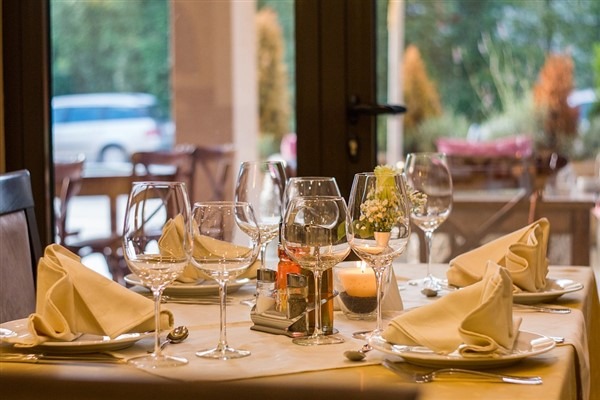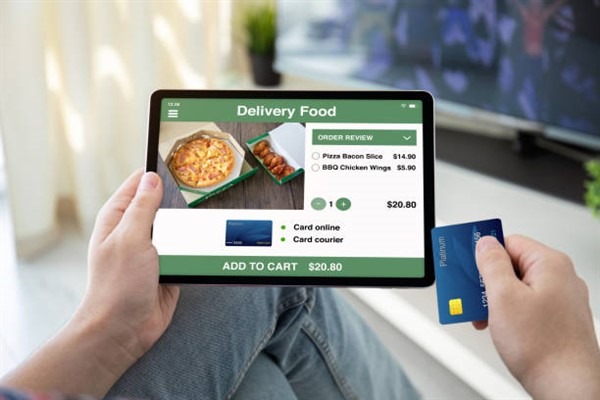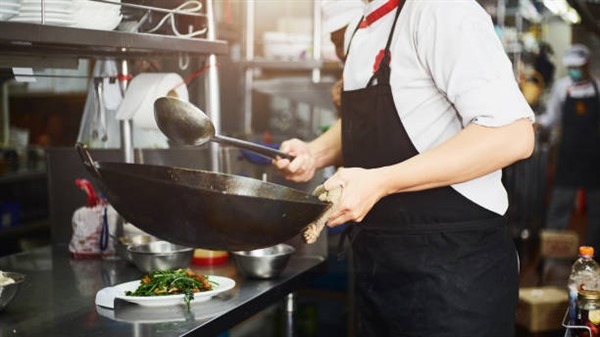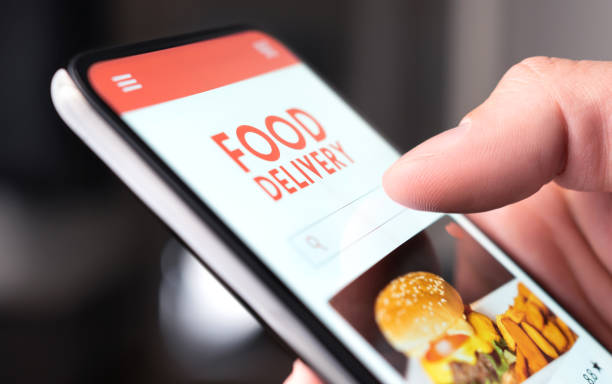Introduction
In today’s fast-paced digital age, the way we dine and experience food is undergoing a seismic shift. Two concepts that have emerged as pioneers in this culinary revolution are Virtual Restaurants and Ghost Kitchens. Let’s embark on a comprehensive journey to explore these innovative dining models and gain a deep understanding of their key differences.
Virtual Restaurants: Unveiling the Concept
Virtual restaurants are the epitome of an online-only culinary experience. They exist solely in the digital realm, offering no physical dine-in spaces. These establishments leverage existing kitchen spaces and partner with food delivery apps, creating a strong online presence that entices customers to order their delectable offerings.
The virtual restaurant model is a testament to the power of the internet and the rise of food delivery services. The concept has gained substantial popularity in recent years, driven by changing consumer preferences and the convenience of ordering restaurant-quality meals from the comfort of one’s own home.
Ghost Kitchens: A Brief Overview
Ghost kitchens, on the other hand, are like culinary chameleons, often housing multiple brands under one roof, with no traditional dining area. They prioritize efficiency, cost-effectiveness, and a delivery-centric business model.
Ghost kitchens, also known as dark kitchens or cloud kitchens, have revolutionised the restaurant industry by redefining the way food is prepared, cooked, and delivered to customers. These kitchen-centric operations have become a pivotal force behind the scenes, reshaping the restaurant landscape.

Key Differences
One of the primary distinctions between virtual restaurants and ghost kitchens lies in their business model. Virtual restaurants focus on a single brand and cuisine, while ghost kitchens juggle multiple brands within a single kitchen. This fundamental difference in business strategy leads to various other distinctions, each with its own set of advantages and challenges.
Business Model
Virtual restaurants operate as a single brand, crafting a specific culinary identity, and focusing their efforts on delivering a particular cuisine or dining experience. These establishments thrive on building a strong online presence and attracting a dedicated customer base through targeted marketing and branding efforts.
In contrast, ghost kitchens are a bit like culinary incubators. They house several different brands and cuisines under one roof, allowing multiple businesses to operate simultaneously from the same kitchen space. This approach maximizes the use of kitchen facilities and resources, often resulting in a diverse menu offering for consumers. However, it can also be challenging to maintain consistent branding and quality across multiple brands.
Customer Interaction
Virtual restaurants primarily exist in the online realm, with customers interacting through food delivery apps and websites. They do not provide a physical space for dine-in customers. This digital-first approach means that virtual restaurants must focus heavily on their online ordering platforms, user experience, and customer service to succeed.
Ghost kitchens, although primarily delivery-focused, may offer takeout options. However, they do not have traditional dining areas for customers to sit and enjoy their meals. The absence of dine-in spaces means that ghost kitchens can maintain a laser focus on the efficiency of their kitchen operations and delivery logistics.
Branding and Marketing
For virtual restaurants, branding is everything. Since they operate solely in the digital space, their online presence and branding efforts are critical to attracting and retaining customers. The success of a virtual restaurant often hinges on its ability to create a strong online identity and cultivate a loyal customer base.
Ghost kitchens, while not immune to branding, often prioritise food quality and consistency over elaborate branding efforts. With multiple brands operating from the same kitchen, the spotlight tends to shift toward the quality of the food and the ability to efficiently manage multiple menus.
Location and Accessibility
Virtual restaurants can operate from virtually anywhere, as long as they have access to a kitchen and delivery infrastructure. This flexibility in location allows them to cater to a broader geographical area and reach customers who may not have access to traditional brick-and-mortar restaurants.
Ghost kitchens, on the other hand, are tied to specific kitchen locations. While they can serve a local market effectively, they lack the geographical flexibility of virtual restaurants. However, their ability to efficiently serve a local market can be a significant advantage in densely populated areas.

The Advantages of Virtual Restaurants
Virtual restaurants offer several advantages that make them an attractive option for entrepreneurs and consumers alike:
- Flexibility in Cuisine and Branding: Virtual restaurants can quickly adapt to changing food trends and experiment with different cuisines without the constraints of a physical location.
- Lower Startup and Operating Costs: Without the need for a physical storefront, virtual restaurants can significantly reduce their startup and operational expenses.
- Wider Geographical Reach: The digital nature of virtual restaurants allows them to reach a broader customer base, including those in underserved areas.
- Ability to Adapt to Changing Food Trends: Virtual restaurants can pivot and adjust their menu offerings rapidly in response to evolving consumer preferences.
The Advantages of Ghost Kitchens
Ghost kitchens offer a unique set of advantages that have disrupted the traditional restaurant industry:
- Efficient Utilization of Kitchen Space: By hosting multiple brands in a single kitchen, ghost kitchens optimize kitchen space, reducing idle time and increasing efficiency.
- Diverse Revenue Streams: The ability to operate multiple brands from the same location means that ghost kitchens can generate diverse revenue streams.
- Reduced Overhead and Staffing Requirements: With fewer overhead costs and staff required for front-of-house operations, ghost kitchens can focus on what matters most: the quality of the food.
- Enhanced Focus on Food Quality and Innovation: Ghost kitchens can concentrate their efforts on perfecting their recipes and delivering exceptional food quality.
Challenges and Considerations
While both virtual restaurants and ghost kitchens offer compelling advantages, they also face unique challenges:
Virtual Restaurants
- Competition in the Virtual Space: The digital dining landscape is becoming increasingly crowded, making it essential for virtual restaurants to stand out and differentiate themselves.
- Managing Online Reputation and Customer Reviews: Customer reviews and ratings can significantly impact a virtual restaurant’s success, necessitating careful attention to customer service and food quality.
- Regulatory and Licensing Challenges: Navigating the regulatory landscape, including permits and licenses for food delivery, can be complex and vary by location.
- Logistics and Delivery Infrastructure: Ensuring reliable and efficient food delivery is crucial for virtual restaurants, as delays or mishaps can lead to customer dissatisfaction.
The Rise of Virtual Food Experiences
Ghost Kitchens
- Balancing Brand Consistency: Maintaining consistent branding and quality across multiple brands operating from the same kitchen can be challenging.
- Logistical Complexity: Coordinating multiple menus, orders, and delivery drivers within a ghost kitchen can be logistically complex.
- Competition for Kitchen Space: As the popularity of ghost kitchens grows, securing prime kitchen locations in densely populated areas can become increasingly competitive.
- Operational Efficiency: While ghost kitchens are designed for efficiency, managing multiple brands within a single space requires careful operational planning.

The Future of Digital Dining
As we look to the future, it’s clear that virtual restaurants and ghost kitchens are here to stay. These innovative dining models have already disrupted the restaurant industry and continue to evolve in response to changing consumer preferences. Here are some key insights into the future of digital dining:
- The Evolving Landscape of Virtual Restaurants and Ghost Kitchens: Both concepts are likely to continue evolving, with entrepreneurs and investors exploring new ways to optimize their operations and provide unique dining experiences.
- Potential Trends and Innovations: We can expect to see technological advancements, such as AI-driven menu recommendations and improved delivery logistics, enhancing the customer experience.
- The Impact on Traditional Dine-In Restaurants: The rise of virtual restaurants and ghost kitchens has put pressure on traditional dine-in restaurants to adapt. Some may choose to incorporate elements of these models into their operations to stay competitive.
Conclusion
In conclusion, the culinary landscape is undergoing a profound transformation, with virtual restaurants and ghost kitchens at the forefront of this revolution. While each model has its unique strengths and challenges, both are contributing to the reshaping of how we experience food in the digital age. Whether you’re an entrepreneur looking to enter the food industry or a consumer seeking convenience and choice, these innovative dining concepts are worth keeping a close eye on as they continue to redefine the future of food.
Author’s Note: As a food enthusiast, I have personally witnessed the impact of virtual restaurants and ghost kitchens on the industry. If you have any questions or would like to share your own experiences, please feel free to reach out. Your insights and feedback are greatly appreciated in this dynamic culinary landscape.













